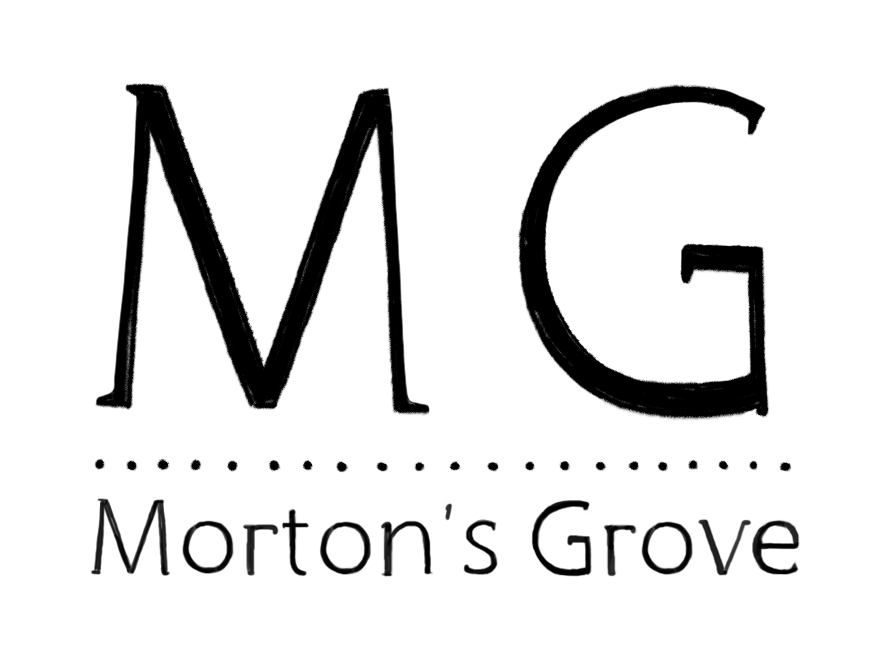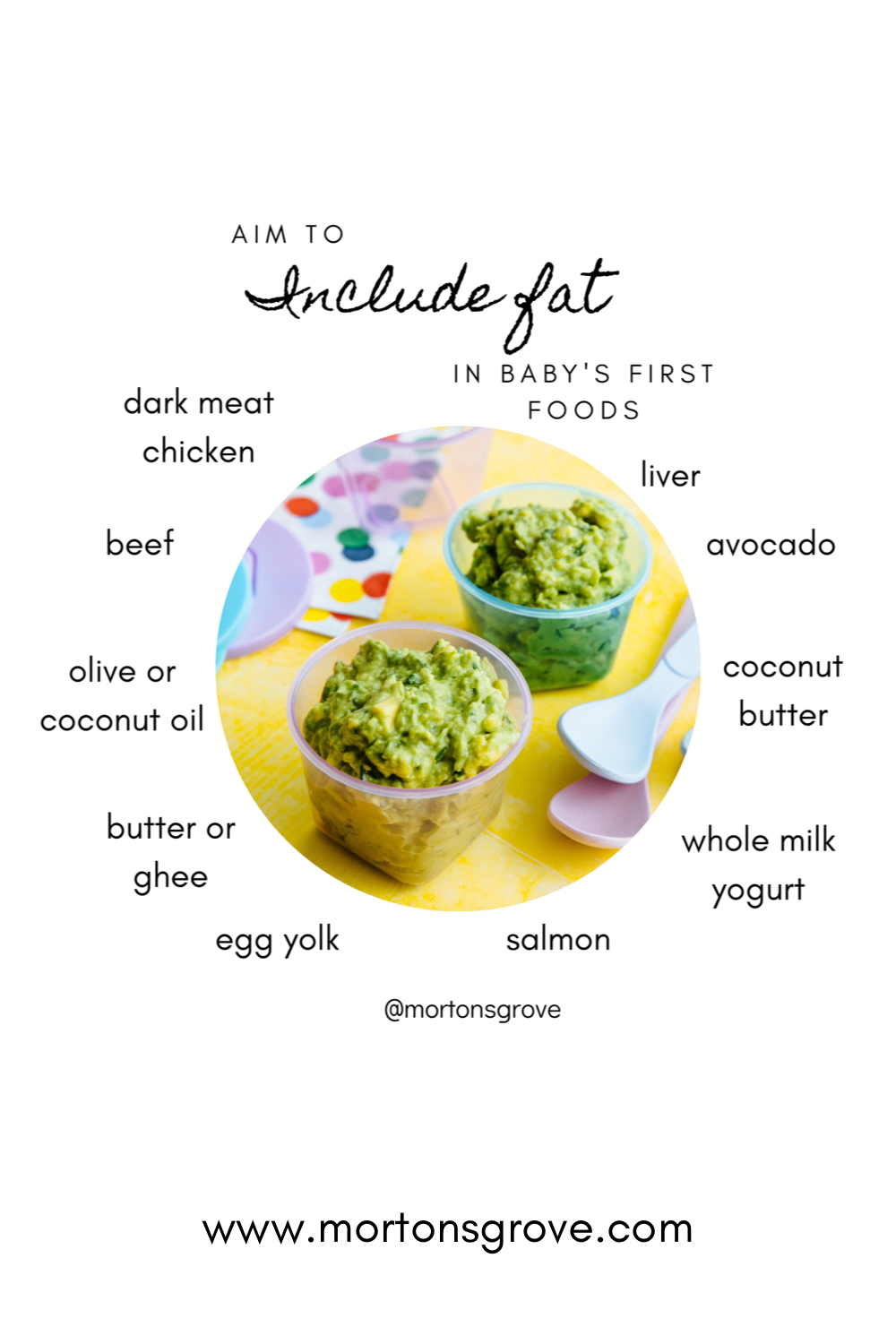The importance of fat in baby's first foods
What you’ll find in this post:
About 50% of calories should be coming from fat until around 12 months old. Look for quality fats including butter or ghee, meat cooked on the bone, coconut oil, or extra virgin olive oil (more options in post). A specific type of fat, DHA, is especially important for babies. Fat makes food taste good, offering veggies cooked in fat (roasted, steamed, mashed, or BLW style) may increase acceptance.
Strolling the baby food aisle of target is something I’ve been known to do. It’s so close to the diaper aisle so I can’t help but wander over there after picking up wipes, just out of curiosity.
Something I noticed a while ago is that very few ready-to-eat baby foods contain one of the most important nutrients for babies: fat. You’ll find lots of yummy fruit combos, some veggies (also sweetened with fruit incidentally), and some grain based options, but VERY little fat. Seeing as this is an absolutely crucial nutrient for babies around the age of solid introduction (about 6 months), what gives?
Why should first foods include fat?
Babies need a lot of it.
About 50% of calories should come from fat until about 12 months. Much of that is covered by breast milk or formula, but it’s a great idea to get into the habit of including energy dense (high fat) foods right from the start. Many times, first foods focus on fruits and veggies. While these are super important foods to include, without fat and protein they don’t provide a balanced intake for baby.
In the older baby and toddler years, growth slows and nutrient needs decrease oftentimes bringing a decrease in appetite along with it. Habitually cooking and serving foods with nutrient dense healthy fats can come in handy during those phases when kiddos may be eating less - every bite counts.
Fat makes food taste good.
Vegetables are commonly offered as first foods, and for good reason: it doesn’t get more nutrient packed than a good leafy green. Bitter veggies like broccoli and kale provide the additional benefit of exposure to a challenging flavor, which may lead to greater acceptance of more foods down the road. The thing is, few of us as adults like to eat plain steamed broccoli we usually top it with a little butter and a sprinkle of sea salt. Providing these veggies to babies doesn’t have to be any different (even if that steamed broccoli is pureed rather than whole!).
Fat may help us absorb more nutrients.
Certain nutrients like vitamins A, D, E, and K are fat soluble vitamins, meaning dietary fat needs to be present in order to dissolve them for storage in the body. Many times these vitamins are found in foods naturally containing fat, such as animal products. Some forms of these nutrients are present in plants, where there isn’t always a built-in source of fat to aid in absorption. Added fat can actually help make sure we absorb as much of the good stuff as we can.
An extra special fat: DHA
DHA, a type of omega-3 fatty acid, plays a particularly important role in brain development. It can be found in seafood (some safe options for baby include sardines, herring, mackerel, skip jack tuna, and wild caught salmon - salmon and tuna are both overfished, and I recommend using these options sparingly), a fish oil supplement, or an algae based supplement. Small amounts of DHA can also be found in pastured eggs and dairy.
Omega-3 fatty acids come from the algae eaten by fish, and when it comes to supplementation, it makes the most sense in my opinion to go straight to the source and choose an algae based DHA supplement over one from fish oil.
Note that the only plant-based/vegan source of DHA is algae. The type of omega-3 fatty acids that come from other plant-based sources cannot be efficiently converted into DHA in the body. Unless your baby regularly consumes seafood (1-2 servings per week), a supplement that contains both DHA and EPA is recommended (talk with your pediatrician about the right supplement option for your babe). Omega-3 fatty acids including DHA transfer into breast milk, so if you are a nursing mom, make sure you are getting enough as well.
Healthy fats for baby:
Aim to add a little fat to most of babies first foods. Some examples include steamed broccoli topped with butter (pureed or served in whole florets), butternut squash mashed with coconut cream, any veggie soft roasted with ghee, or apples sliced and sauteed in coconut oil until soft. The following options all provide “healthy” fat sources that can withstand heating without producing harmful trans fatty acids.
Coconut oil, coconut cream, or coconut butter
Butter or ghee
Extra virgin olive oil
Beef (cooked on bone for additional nutrients)
Dark meat chicken (cooked on bone for additional nutrients)
Fatty fish - some of the best options are sardines, cooked oysters, mackerel, or herring and occasionally smoked, fresh, or canned wild caught salmon (salmon are in danger of being over fished, so I am conscious of how often I choose this nutrient packed option).
Whole milk plain yogurt or kefir
Liver and other organ meats
Egg yolk
Small amounts of nut butter (mixed into a puree or thinly spread on steamed fruits or veggies) - look for options that are simply nuts or nuts and salt with no added oils or sweeteners.
When it comes to fats and oils, I vary the options I purchase from the store in order to get all of the benefits various types offer. For example, I rotate olive oil, avocado oil, coconut oil, along with animal fats butter, ghee, and occasionally lard to balance out saturated with unsaturated fats (both are beneficial, especially for babies and toddlers!).








